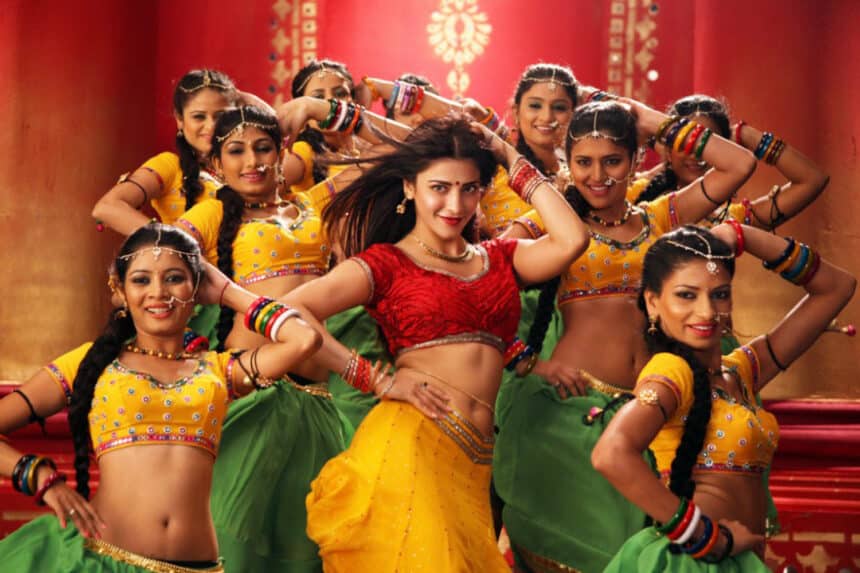Walk through any night market in Bangkok, Chiang Mai, or Hat Yai these days, and something surprising stands out. The pounding intro of “Saahore Baahubali” or the soft tune of “Srivalli” spills from phone speakers. Students in university jackets practice the “Naatu Naatu” hook step, aunties debate whether Prabhas or Allu Arjun is more attractive, and huge Facebook communities rush to add Thai subtitles to the latest Telugu hit within hours of its India release.
Tollywood, the Telugu film industry based in Hyderabad, has quietly turned into one of the biggest foreign film obsessions in Thailand. In some age groups, it even rivals, and sometimes beats, Korean dramas. A regional Indian industry that many people still struggle to place on a map has charmed an entire country in Southeast Asia. The secret lies in a bold mix of visual spectacle, high emotion, and unashamed fun.
A Visual Blast Thai Cinema Did Not See Coming
Thailand has always adored bright colours. From Songkran water fights and Loy Krathong lanterns to the neon glow of Walking Street, bold shades feel almost sacred. Then Tollywood arrived and treated every frame like a festival of colour turned up to maximum.
“Thai audiences are tired of the dull colours in most Hollywood blockbusters and even our own lakorns,” says Nong Film, a 24-year-old admin of the Facebook group “Tollywood Thailand SSB”, which has around 380,000 members.
SSB refers to three superstar names: Prabhas of Baahubali fame, Ram Charan, and N.T. Rama Rao Jr. from RRR. “When you watch Pushpa or RRR, it feels like someone pushed the saturation slider to 200%. The saris, the lehengas, the armour in Baahubali, the temple fairs and village scenes, they all burst with life. Thai films do not look this colourful right now.”
Costume teams in Hyderabad seem to follow a simple rule: if it does not shine under bright lights, redesign it. Silk saris in loud magenta, deep emerald, and rich gold thread shimmer in slow-motion fight scenes. Heroes wear kurtas that gleam as if dipped in metal. Thai viewers grew up with more muted traditional outfits in period lakorns, so this intense colour palette feels like pure visual candy.
Dance As a Shared Language
Colour pulled people in, but dance sealed the deal.
Thailand has long traditions of its own, such as khon and fon leb. Modern Thai pop culture leans towards sweet T-pop choreographies or K-pop covers, often performed at school fairs or fan meets. Tollywood dance numbers arrived and changed the scale. Five-minute song breaks feature hundreds of background dancers moving in sharp patterns while the hero jumps, spins, and slides through fire, water, and falling confetti.
“The first time I watched ‘Ringa Ringa’ from Arya 2 on YouTube back in 2012, I screamed,” recalls Pim, a 31-year-old dance teacher from Khon Kaen. She now runs the TikTok account @ThaiduetsTollywood, which has 1.2 million followers. “Thai people love group dancing. Just look at any university freshy night. Tollywood makes that energy even bigger. The power, the unity, the joy on everyone’s face, it made us want to copy it straight away.”
Thai fans did not stop at copying. A quick search for “Naatu Naatu Thai cover” on TikTok brings up thousands of clips. Students in Isan, office teams on Silom Road, and even monks in saffron robes give the famous step a go. The Oscar-winning “Naatu Naatu” has drawn more than 42 million views from Thai dance covers alone.
Big Feelings, Familiar Stories
Behind the glitter and footwork sits something that feels very Thai: strong emotion without shame.
Thai lakorns are known for wild storylines, slap and kiss scenes, bitter revenge, secret babies, and impossible romance. Telugu films use a similar emotional toolkit but at a higher volume. Mothers are treated as almost holy, friendships look unbreakable, and the hero will walk through flames with his best friend on his shoulders while sobbing.
“Thai people cry very easily at films,” jokes Dr Nitaya Kanokmon from Chulalongkorn University’s Faculty of Communication Arts, who has studied this trend. “In a normal lakorn episode, people cry multiple times. Tollywood gives the same release, but packed into one film instead of 40 long episodes.”
When Baahubali is betrayed and falls from the waterfall (a six-year-old spoiler by now), Thai comment sections fill with “น้ำตาแตก” (tears bursting) and rows of crying emojis. Stories about mothers, often called “Ammoru” sentiment in Telugu circles, touch the same nerve as the Thai phrase “mae mee but hai” (mother has only one child), a line that can reduce adults to tears.
Piracy, Platforms, and a Volunteer Sub Squad
This cultural wave would not exist without online platforms and a loyal fan base that worked in the shadows for years.
The real growth started between 2015 and 2017, when Baahubali: The Beginning and Baahubali 2: The Conclusion broke records around the world. Short clips travelled fast on Facebook. A few Thai fans began adding hard-coded Thai subtitles and shared full films via private Google Drives.
When S.S. Rajamouli’s RRR arrived on ibomma in 2025 with official Thai subtitles, those fan groups were already hard at work. New titles like Ala Vaikunthapurramuloo, Pushpa, and Kalki 2898 AD appeared with Thai subs within two days of release.
Today, communities such as “SS Rajamouli Thailand”, “Prabhas Thailand Club” (the official fan group with around 210,000 members), and “Tollywood Thai Sub” run like proper teams. Some members have even picked up basic Telugu so they can translate quickly and more accurately.
Studios and Thai distributors have begun to notice. In 2024, major player M Pictures started to release Telugu blockbusters in Thai cinemas. Kalki 2898 AD, Devara, and the much hyped Pushpa 2: The Rule secured wide releases with both Thai and English subtitles. Pre-sales for Pushpa 2 were so heavy that local ticketing apps crashed, something even many big Hollywood releases have never managed.
From Simple Fandom to Real Cultural Exchange
The admiration is no longer one-sided.
Allu Arjun and Rashmika Mandanna recorded short greetings in Thai last year, complete with “Sawasdee krub” and “khob khun krub na” for their supporters. Prabhas’ team publicly thanked Thai fans who donated to flood relief under the name “Baahubali”. Director Prashanth Neel, known for KGF and Salaar, mentioned in interviews that he could not believe his eyes when he saw Thai cosplayers dressed as Rocky Bhai at Bangkok Comic-Con.
Thai beauty pageants have followed the trend. Contestants now often choose Tollywood songs like “Saami Saami” or “Angaaron” for the talent round. The Tourism Authority of Thailand has even discussed a “Tollywood Trail” tour in Hyderabad to attract Thai visitors eager to see film locations, studios, and iconic spots linked to their screen idols.
The Numbers Tell the Story
* Pushpa: The Rise (2021) made more than 35 million baht in Thailand during its 2024 re-release, which is remarkable for a non-English film that was already three years old.
* RRR (2022) ranks among the top 10 most-watched films ever on Netflix Thailand.
* “Naatu Naatu” covers by Thai dancers have been reposted by Ram Charan, Jr NTR, and composer M.M. Keeravani on their official accounts.
* Searches for “หนังอินเดีย” (Indian movies) in Thailand have risen by around 450% since 2019 on Google Trends, with Telugu films leading most of that interest.
What Comes Next for Tollywood
Pushpa 2: The Rule is set to hit Thai cinemas on 5 December 2025, with more than 400 screens booked across the country, the highest count for any Indian title so far. Industry talk suggests that Thai streaming giant TrueID is close to signing exclusive rights for several upcoming Telugu films.
One thing feels clear. The next time loud drums echo through a Bangkok street and hundreds of people break into the same dance moves, there is a good chance the lyrics will be in Telugu, and half the crowd will know every beat.
In 2025, in the Land of Smiles, some of the biggest smiles belong to fans of Tollywood.















